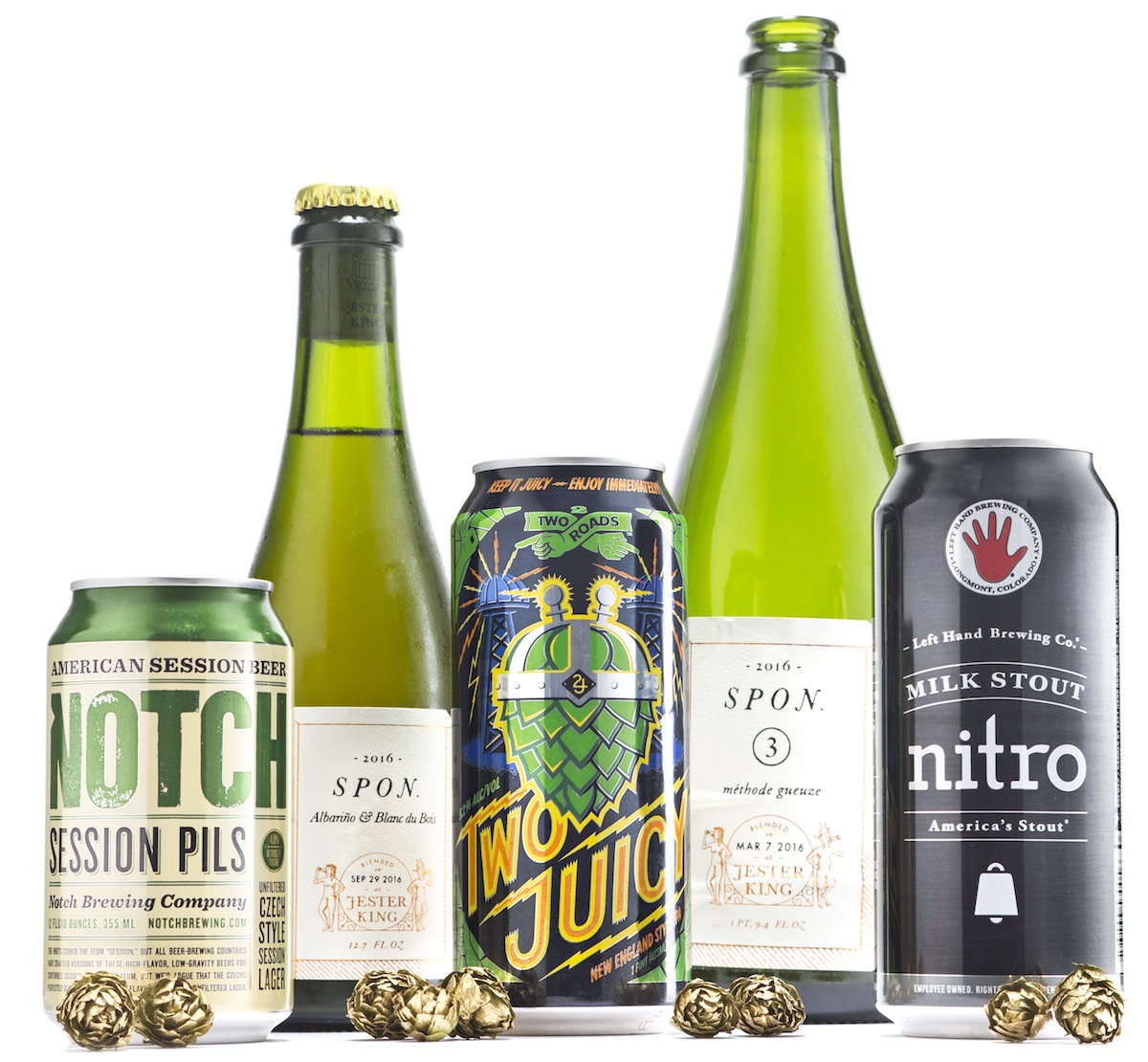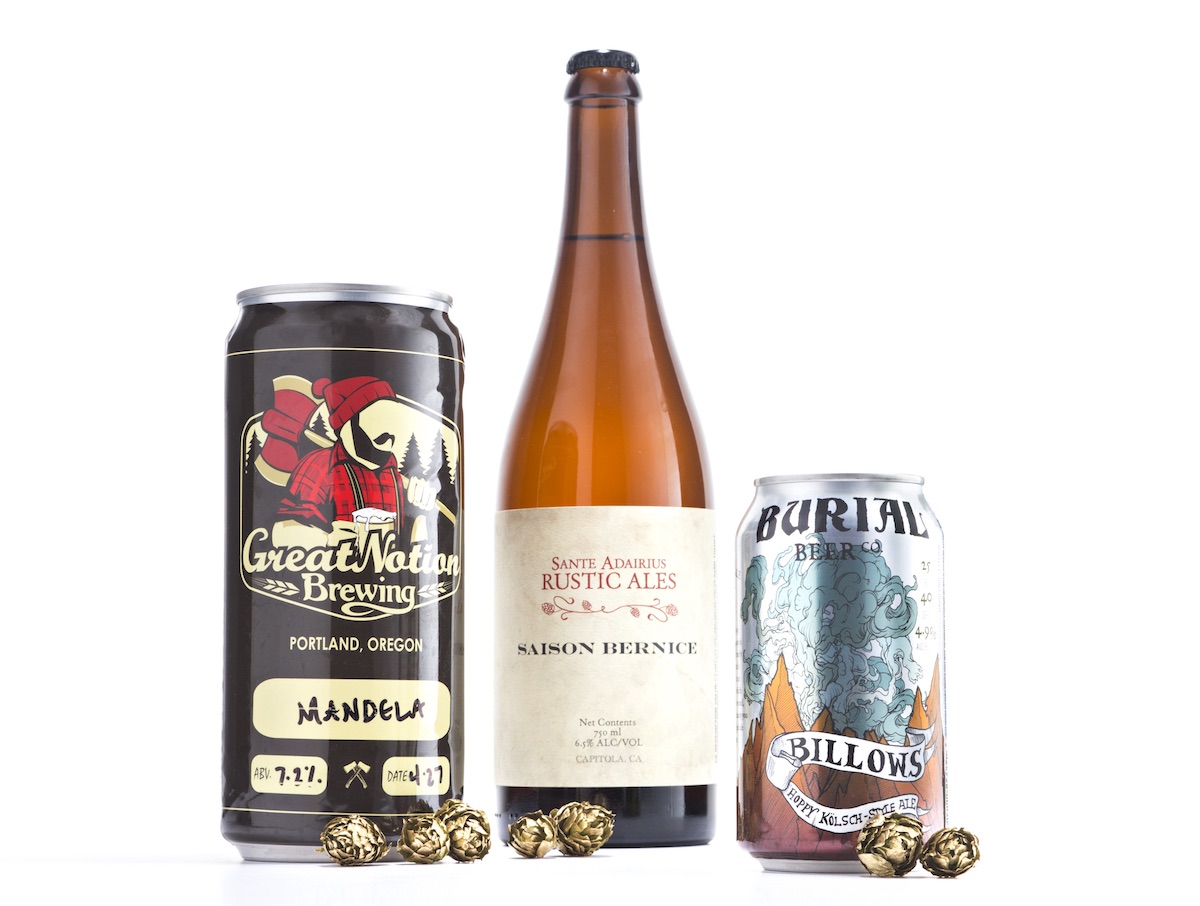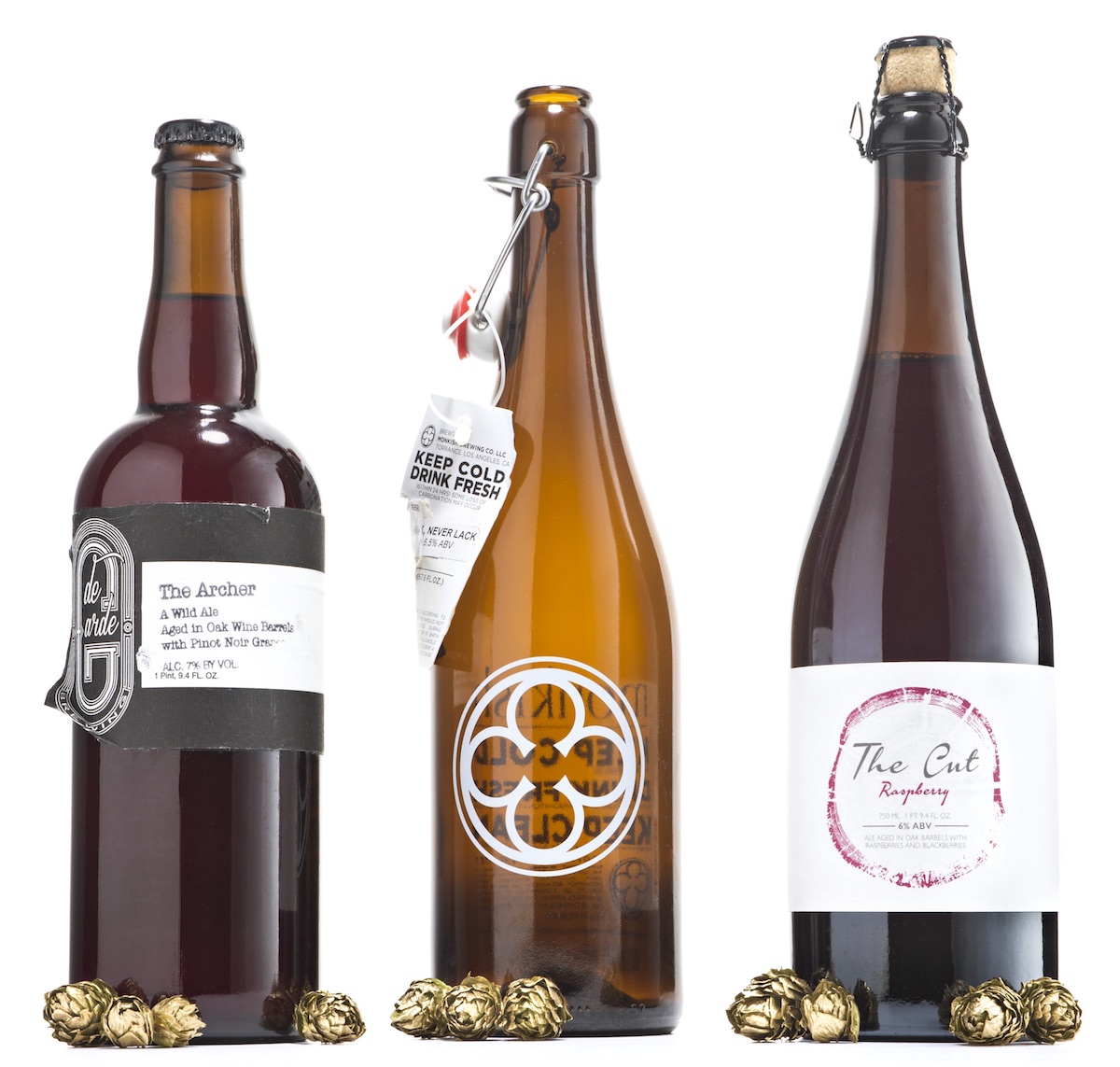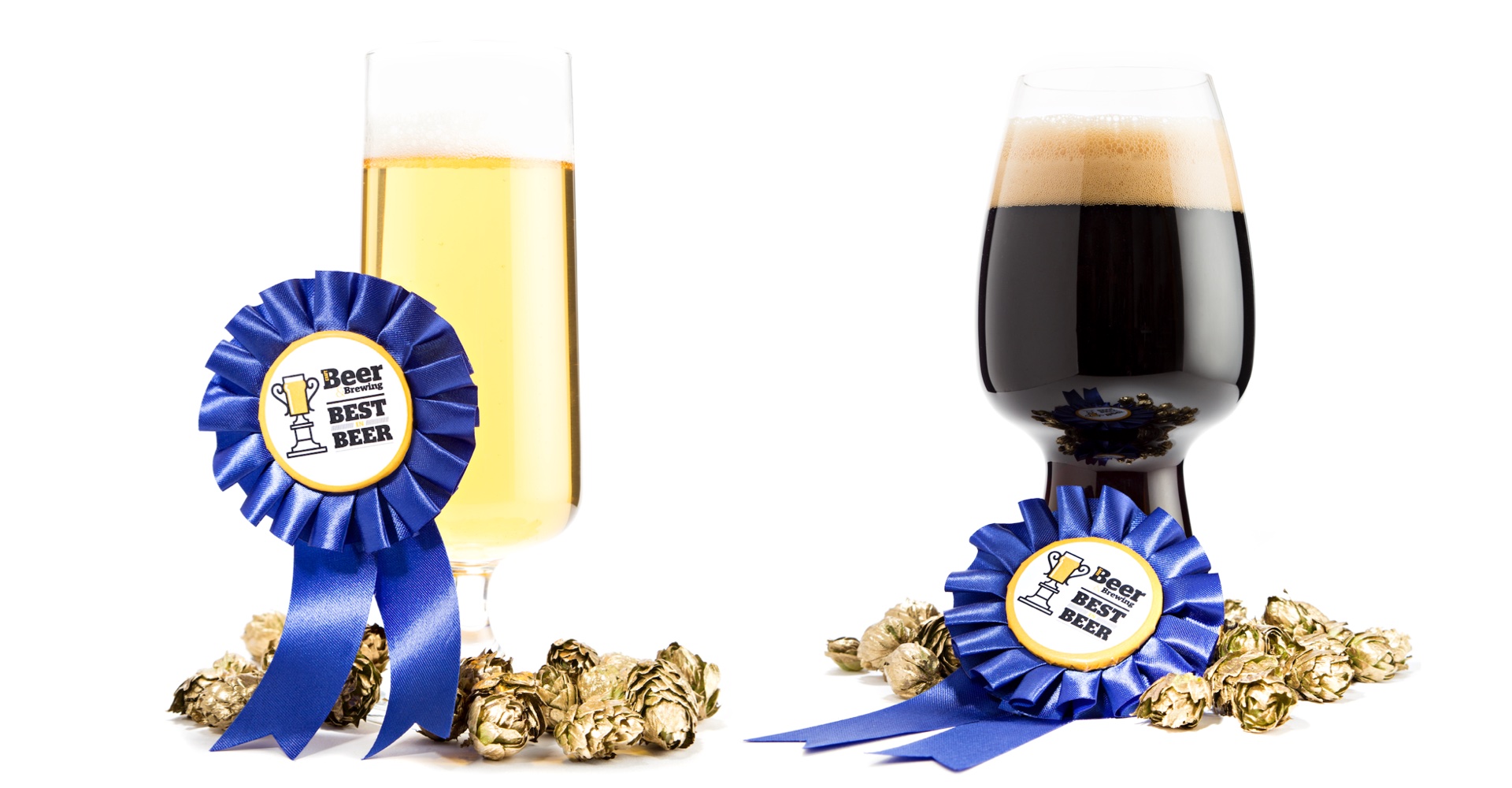The Craft Beer and Brewing Magazine seventeen best beers of 2017 are:

Firestone Walker Leo v. Ursus Fortem
There’s no shortage of IPA in the marketplace. Walk into a bar and you’re likely to find several on tap, all showcasing different flavors, all (hopefully) hitting the mark of what a hop-forward ale should be. Some stand taller than others, but only rarely does a beer like this come along, crush the competition, and make us sit back and take stock on all we think we know about IPA. Then, collectively we stand and give this beer the ovation it deserves. It’s a melding of the traditions of old with the ones of new—crisp and creamy, full of a fruit salad of flavors from melon to ripe berries. Caramel malt is not a background player, but an equal collaborator, just like it should be. This IPA, the first in a new series from the long-respected, hop-bending brewery is a testament to how persistence, education, and never settling can create an ale worthy of applause and one that future brewers will cite as the platinum standard. We say this is an amazing time to be a beer drinker. This beer is why.
Rodenbach Fruitage
The skepticism was real when Rodenbach announced that not only would it be releasing a new version of its classic Flanders red with fresh fruit in America, but that it would also be canned. Happily, the beer delivered on the promise of the Belgian brewer’s tradition, and fears were abated. The addition of elderberry and cherries to the earthy stalwart created a bright vibrancy that made this a great alternative to the overdone shandies that have dominated the last few summers. Released as a limited edition, we can’t help but wonder if it will return, and if it does, if it’ll cast the same spell on us that it did the first time. When we know a beer will be fleeting, we tend to spend more time burning as much of the experience into our memory. It will live on in our notes, check-ins and the shared experience of clinking cans of a Flanders red with friends. If there’s a trend on the horizon, one where this assertive classic style get a modern upgrade, sign us up—but only if it can match this or go beyond it. It does no one any favors being stuck in the past just for the sake of things and with Fruitage it’s heartening to see there are traditional breweries are still looking to innovate without compromising integrity.

Jester King Spon 1-4, Flor, and Fruit Variations
One of the bigger stories of 2017 was the explosion in spontaneously fermented beers, and Austin’s Jester King Brewery led the charge not only by releasing a groundbreaking set of multi-year spontaneous blends, but also by pushing for the definition and designation of these blended beers as “Méthode Traditionelle.” It’s curious that an adherence to the most traditional of Belgian methods might be considered innovative in American beer today, but credit is clearly due for taking a process that works at 50° latitude and engineering it for the considerably different climate at 30° latitude. None of this focus on process would matter, however, if the beer itself didn’t express a captivating, unique, and compelling flavor, and that’s where the Spon series really shines. Each of the initial four blends had a distinct character to it, the Flor blend picked up a caramel and reduced orange note from the migrating Sherry barrel culture, and the fruited blends of single-year spontaneous beer are some of the finest expressions of fruited sour and wild ales made in the United States by any method, spontaneous or not. While many sour beer makers in the states seem hell bent on heavy-handed acidity and overwhelming fruit levels that mask any semblance of beer character, Jester King instead celebrates the fine art of nuance. The result is some of the most sophisticated yet drinkable acid-forward beer made not just in America, but anywhere in the world.
Notch Brewing Session Pilsner
Time was that if we wanted a fresh, flavorful, and authentic Czech Pilsner we needed to head to its homeland, the Czech Republic. Thankfully, today, we only need to travel to Salem, Massachusetts (or surrounding states). It’s where Chris Lorhing, the long-time New England brewer who has a fanatical respect for lagers, Pilsners, and all styles cold fermented, opened his Notch Brewing Company a year ago. It’s a temple to Saccharomyces pastorianus, and while he makes all manners of lagers from the traditional to the obscure, the Pilsner (which is also contract brewed and canned at Two Roads Brewing Co. in Connecticut) is year-round and the beer built for long conversations, quiet reflection, a concert, backyard cookout, and any situation where you want a biscuity, noble hops-forward, refreshing beer. It’s especially great if you want more than one. It’s funny to think of things going backwards, but we craft drinkers are becoming more diverse and branching out beyond the double IPAs and barleywines while looking to lagers and Pilsners as the path forward. This one isn’t trying to be an American version of anything. This is a perfect representation of the style. Drink one, or six, and appreciate the nuance of this older style and the refreshing nature of true Pilsner. This might be the beer to take on the macros and win.
Two Roads Too Juicy Double IPA
When we close the book on 2017, it might just be the year where the established brewers in the industry turned to the younger generation and said “anything you can do, we can do better.” Case in point—this “unfiltered, cloudy New England Double IPA” from Connecticut’s Two Roads Brewing Co., that nails all the hallmarks of the style from the aesthetics to the mouthfeel, flavor, and finish. It’s not to say the torch bearers of New England-style IPA don’t do a good job. They do. A beer of this caliber highlights that’s there’s so much more to be discovered in a relatively new style. Not simply dense and juicy, this is bursting with fruity nuance from lychee and orange, to the more traditional grapefruit and pine. The malt is soft and creamy, and it belies its 8.2% ABV, meaning that you’ll go against your better judgment and reach for that third pint can. One added benefit—coming from a larger brewery means there’s more available for everyone, so you can sleep in on Saturday morning and just pick some up at the store when you’re ready.
Left Hand Milk Stout Nitro
We’ve been pouring bottles of Left Hand’s Milk Stout Nitro hard since the back page of our very first issue, and have developed a deep love of this “crushable” workhorse of a stout that consistently delivers slightly sweet chocolate and roast notes with one of the smoothest and creamiest bodies around. The head on this beer is one of the most photogenic in beer (that’s Milk Stout Nitro on the cover of this issue, for example) and despite its ubiquity we’ve never had a pint of it that was anything less than extraordinary. So why a beer of the year in 2017? This year marked its entry into cans, with a nitrogen widget inside that makes the hard pour from glass unnecessary, and a stylish black can tab for added effect. The experience of pouring it is no longer counterintuitive, yet is every bit as visually stimulating as it’s ever been. It’s important to remember, too, that in a craft beer world where “stout” is increasingly preceded by the world “imperial,” sessionable stouts like Milk Stout Nitro pack so much flavor into a format that allows you to drink more than one in a sitting. We’ll raise a glass to that, poured from the new can, of course.

Great Notion Mandela New England-Style IPA
We first met Paul, James, and Andy of Great Notion in early 2016 (five months after they opened) when they joined us for our Brewers Retreat in Astoria, Oregon. We were impressed with their beer at the time and loved the story of how these homebrewing neighbors cobbled together investment to buy an underperforming brewpub and turned it into the hottest brewery relaunch that Portland (or the western United States, for that matter) has ever seen. What we could not have predicted, and couldn’t be happier about, is just how deeply the beer world has embraced their creative takes on a variety of styles—from hazy IPAs to culinary kettle sours to adjunct stouts named after pancakes. We suspect they’ll reach maximum capacity at their new million-dollar production brewhouse shortly after it opens. Earlier this year, we put the call out for IPAs to review for our annual IPA issue, and received a package of crowlers of some of their best. The standout for our review panel and for our staff was Mandela, their Nelson Sauvin-driven hazy IPA that our panel described as “A light smoothie full of flavor—strawberry, raspberry, orange, lemon, and pine,” “An ideal of the style,” and “Everything I want a juicy IPA to be.” Not all hazy IPAs are created equal, and Great Notion’s are proof that while the style may have originated in New England, it now belongs to the world.
Burial Billows Kölsch
When you visit this Asheville brewery there’s a few things you must do. First, stand in line with fellow enthusiasts for Skillet Donut Stout, and then take a picture of the wall mural featuring Tom Selleck hugging Sloth from the Goonies. Hang out long enough at this Asheville, North Carolina institution and you’re also likely to see brewers from across the country hanging out. Burial has created the type of brewery where brewers themselves like to congregate, as if they were one of us common folk. Look closely, however, and you’re likely to see they are drinking Billows, the house Kölsch (that’s also available in cans). Slightly more hoppy than the traditional German recipe (USA! USA!), it’s the kind of beer that brewers make because it’s the beer they want to drink. Kölsch isn’t as sexy as say, the latest IPA made with an experimental hop, but done right—like this one is—a Kölsch is a solid, refreshing beer that allows each of the four main ingredients to shine and stand on their own. It also takes an incredible amount of skill to execute properly. Billows is a well-crafted reminder that the best thing on the tap list might just be a classic style.
Sante Adairius Rustic Ales Saison Bernice
Fermenting in wood vessels—foeders, puncheons, barrels—is hot right now, but this unassuming mixed-fermentation saison from Sante Adairius Rustic Ales is proof that vessel alone is not destiny. The stainless-fermented beer is weightless and airy with subtle citrus flavors and a touch of funk over a masterfully restrained acidity. The striking use of negative space—all the flavors it eschews in order to focus on its own intentionally edited minimalism—is artfully ahead of its time. Wood has fallen out of favorite with a number of winemakers, and for good reason—wood can overshadow more subtle characteristics in delicate whites. Saison Bernice suggests that more brewers should consider a similar approach to farmhouse beers, and that proper care and technique can yield incredible results regardless of fermentation vessel.

Hardywood Park Ruse Barrel-aged Imperial Milk Stout
The vast number of barrel-aged stouts on the market take a paint-by-numbers approach. “Here’s the barrel character, here’s the roast, here are the chocolate notes, and here’s the residual sweetness.” It’s a rare beer that pulls each of those elements together into a cohesive whole, but Hardywood Park’s Ruse has embraced that golden mean. Wine barrel-aged stouts in particular often suffer from tannin overload, but Ruse is remarkably restrained and the smooth edges of the thick and luxurious imperial milk stout hide any hint of astringency. The result is a beer that tastes like itself—mildly jammy with hints of raspberry, chocolate, and cherry soaked in a dark roast coffee with a bit of mocha. We’ve never had a better stout aged in red wine barrels.
Trve Brewing & Cerebral Brewing Brain Transplant
Generally speaking, collaboration beers tend to fail more times than they succeed, and for good reason—brewers get better at making a beer the more times they make it and the more time they spend dialing in their process and technique on a specific beer. By their nature, collabs are experimental one-offs—sometimes wacky ideas conceived to push boundaries—and so a certain amount of failure is inevitable. Having said that, that same level of experimentation has the ability to produce flashes of brilliance that burn bright, and this joint project from Trve Brewing and Cerebral Brewing is an example of just how good it can get. Both breweries have mad game brewing with Brettanomyces, and this massively dry-hopped mixed-culture ale is awash in bright acidity that remains light on the tongue. But hops are the star of the show here, and the masterful blend pulls out exotic fruit notes like lychee, guava, and yuzu from the hops alone. It’s an exceptional beer from two Denver breweries who have (for the most part) flown under the hype radar and built impressive catalogs of accomplished beers without trade forum fanfare.
Drake’s Brewing The Void Barrel-aged Imperial Stout
The expansion of their barrel house bar and aging facility, adjacent to their brewhouse in a San Leandro shopping center, is paying off in spades for long-time east bay fixture Drake’s. While earlier attempts like Bourbon Barrel-Aged Drakonic showed promise, The Void is a culmination of their efforts and the Godzilla-sized barrel-aged stout (17.5% ABV) was the single highest-scoring beer our blind panel tasted (while considering beers for this issue). When the tasting panel lineup includes a long list of amazing 99- and 100-rated barrel-aged stouts from some of the most well-respected breweries in the country, that’s saying something. It’s easy for stouts this large to fall into “trick beer” territory, like hyper-EQ’d speakers that push treble sweetness and subwoofer-crushing bass roast notes with no mid frequencies to round things out, but The Void delivered an artful and cohesive mix of dark cherry, raisin, and whiskey notes with an alcohol component so perfect one judge thought it must have been titrated in. Those deeper notes play against almost latte-like mid notes of vanilla oak and sweet cream to create a big beer that we’d have no trouble finishing (because we just couldn’t put it down).

Casey Brewing and Blending The Cut Raspberry
It’s hard to find an example in the world of beer quite like Troy Casey’s, where his proximity to Colorado’s Western slope farming regions has led to mutually supportive relationships with area fruit growers. As the pioneer of single-varietal beers that showcase locally grown heirloom fruits, Casey is engaging with growers in ways that few brewers do—contracting for fruit crops, or in the case of fruit like the raspberries used in The Cut Raspberry, working with growers to plant fields of certain varieties so that he’ll have future access to them. That progressive thinking would be for naught if the end product of his fruited fermentations didn’t deliver, but his The Cut series has evolved into one of the best expressions of fruit and funk in the United States.
Monkish Brewing Various IPAs
If you ask Jolly Pumpkin’s Ron Jeffries, he’ll tell you that Monkish doesn’t make New England-style IPAs, they make Monkish-style IPAs, and we’re inclined to agree. We’ve sampled the haziest of hoppy offerings from Maine to San Diego and Seattle to South Florida, but a visit to Monkish in March was a beer highlight of our year. Despite their turbidity, Monkish IPAs express a clarity in hops flavor that other brewers strive for, and they do it with a (relatively, for the style) trim attenuation that leaves just enough sweetness to bring those hops flavors forward, without weighting the beers down. We’re not exactly sure about the method they use to get there, but that midpoint between Conan yeast’s protestant austerity and London Ale III’s catholic pageantry makes for delicious IPAs.
de Garde Brewing The Archer
We could have chosen almost any deGarde beer for this list, because every one we’ve had over the past twelve months has been a gorgeous expression of local culture, but The Archer was one Trevor and Linsey Rogers shared during a seminar for our Brewers Retreat in Astoria, Oregon this past May and so it holds a special memory. The combination of spontaneously inoculated wild beer and Oregon-grown Pinot Noir grapes captures two major trends that have accelerated in 2017—an increased focus on local terroir and a marked uptick in beers conditioned on grapes or grape must. We’ve tasted fantastic beers conditioned on grapes in 2017—everything from Trillium Dialed In DIPAs with wine grape juice to Creature Comforts Curiosity 10 to Societe’s The Thief to The Bruery’s many forays into wine-beer hybrids like Vindictive or Toro—but there’s something special about the way Rogers captures the subtlety of the delicate local fruit while wrestling the Oregon coast’s spontaneous culture into a soft expression of acidity with a healthy mineral funk. deGarde’s prolific output and accessible pricing undermine the narrative of exclusivity that drives the top end of craft beer today, but that doesn’t make their work any less significant. This is beautiful art, priced for everyone.

Bierstadt Lagerhaus Slow Pour Pils
It’s either genius, or insane, to launch a brewery today that focuses solely on lagers, but Bierstadt founders Bill Eye and Ashleigh Carter have done just that. Slow Pour Pils shows what Stan Hieronymus refers to as “terrifying respect to traditional processes,” but that obsessive approach has earned Bierstadt respect throughout the beer world, and there’s a reason the brewery is now a must-visit spot for out-of-town brewers visiting Denver.
Hidden Cove Abdominus Barrel-aged Imperial Stout
We don’t need a reason to visit Maine for beer. It’s already a destination state, but Hidden Cove has given us a reason to travel south I-95 from Portland to Wells. The brewery boasts a small but impressive barrel collection that regularly turns out food-inspired creations, like Fragola, a Belgian golden aged with strawberries in wine casks. Owner Richard Varano travels to Italy regularly and brings back wine and Italian spirits barrels to age his creations to great acclaim. It’s no different when he looks to America, to create a beer like Abdominus—a bourbon barrel-aged imperial stout. Now, we know you’re thinking, “another bourbon barrel aged stout. What’s new or exciting about that?” Well, just because there’s a lot out there doesn’t mean they are all good, or even ready to drink when you first get a hold of it. In the case of Abdominus, balance is the key. Inside the bottle, the rich espresso, toffee, and fudge flavors of the stout get a sweet, smoky, vanilla marshmallow weave from the bourbon and oak. It’s ready to drink the moment it’s bottled, if you can hold off longer than that, it’ll only get more smooth with time.


